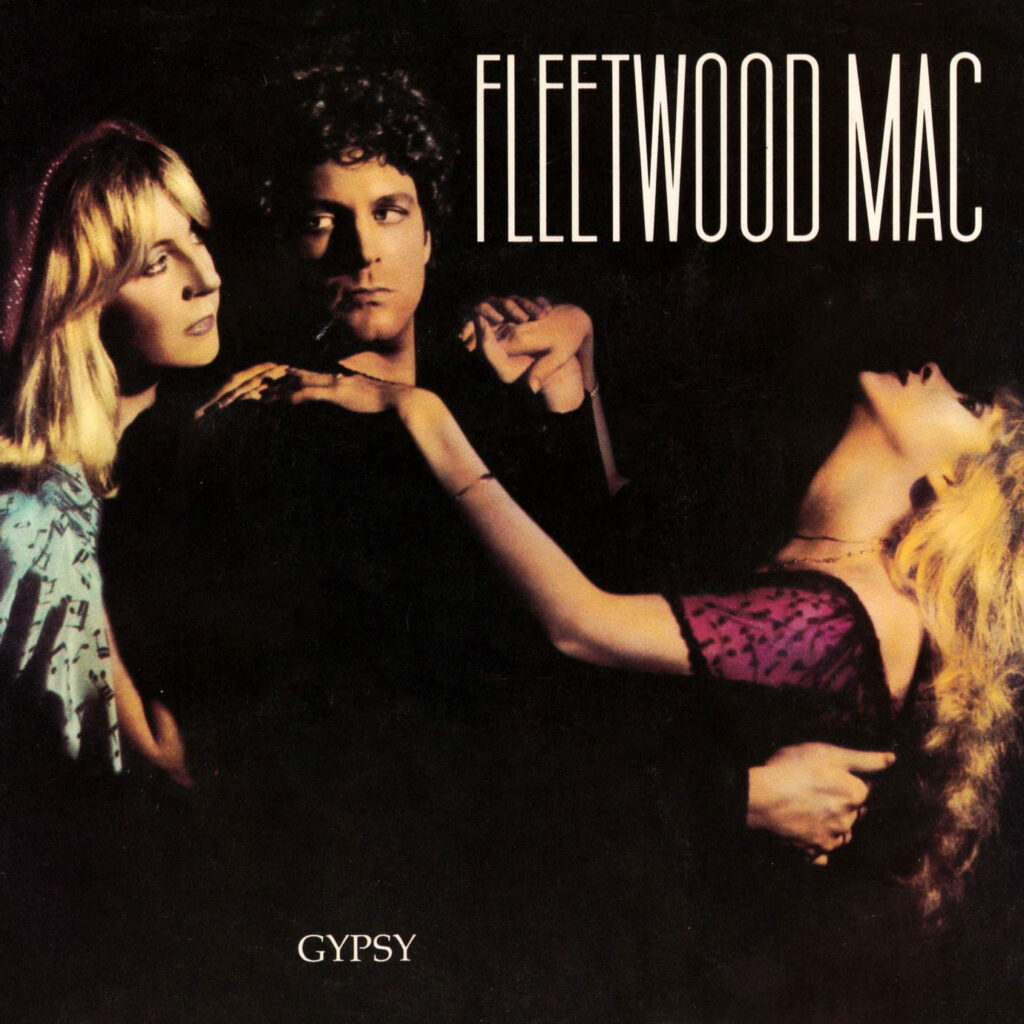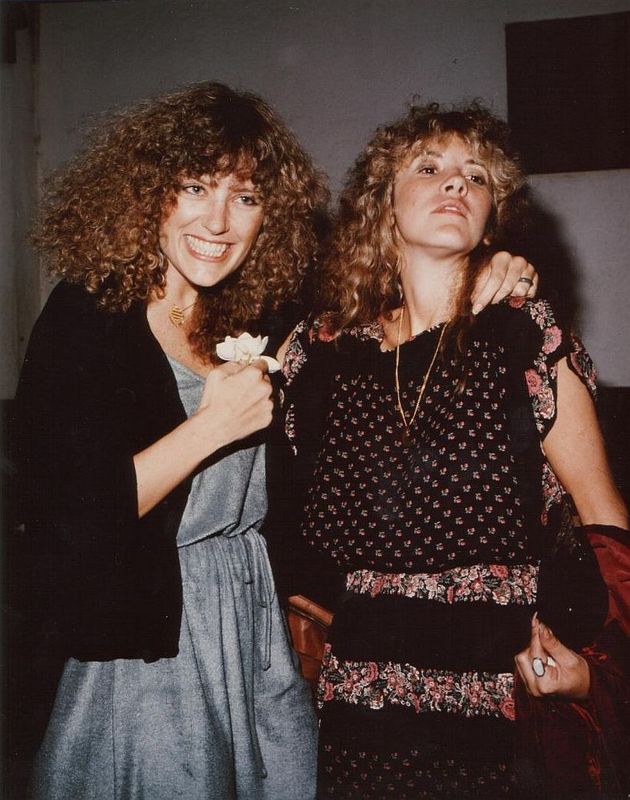The Meaning of Fleetwood Mac’s “Gypsy”

Fleetwood Mac’s “Gypsy” is a Stevie Nicks-penned classic from the band’s 1982 album Mirage. It was the biggest hit from that album, reaching number 12 on the Billboard Hot 100, and today it’s one of Fleetwood Mac’s most well-known songs.
There are several Fleetwood Mac songs that seem to represent the spirit of Stevie Nicks, including “Landslide”, “Rhiannon”, and of course, “Gypsy”, which we’ll talk about in this article.
The lyrics to “Gypsy” describe feelings of nostalgia and longing for a free-spirited lifestyle, which Nicks expresses that she would like to get back to. These words are sung over a gentle, comforting arrangement that invokes the kind of easy-going memories that Nicks sings about, and yearns for.
Origins of “Gypsy”
Stevie Nicks wrote “Gypsy” as early as 1979, during a time when Fleetwood Mac were at the peak of their fame following Rumours (1977), many incredible songs like “Dreams” and “The Chain”, and the widely-publicized inner-band drama that surrounded it.
Early demos were recorded in 1980 for possible use on Stevie’s debut solo album, Bella Donna. As we know, however, the song ended up in Fleetwood Mac’s repertoire instead.
Nicks has spoken extensively on “Gypsy” and its meaning and inspiration over the years, revealing that there are two prominent meanings at play in this song.
Stevie Nicks Pre-Fleetwood Mac
The first meaning is that “Gypsy” is about an earlier version of Stevie Nicks — the young woman who was living in San Francisco prior to joining Fleetwood Mac. She desires to stay connected with that version of herself, but finds it challenging with the fame and stardom that had consumed her life.
She spoke about this challenge in a 1983 interview with Jim Ladd:
For me to be a gypsy; for me to write about the gypsy – and for me to live the life of a gypsy that I love – I sort of almost have to be almost cold and insensitive to be able to remain that gypsy. It’s not easy to be a hippie-gypsy when you’re rich and when you’re a rock’n’roll star.
Stevie Nicks on “Gypsy”, 1983.
During a video interview in 1988, Nicks recalls this simpler time in her life, and how she strives to keep it around:
In the song “Gypsy” it says, “Going back to the velvet underground / Back to the floor…” which means my bed went back on the floor, with the paper flowers and the, you know, there’s a part of that that [era] there will never be again …except that it does live in my house because it was so special.
Stevie Nicks on the meaning of “Gypsy”, 1988.
Now, listening to this song one might assume that the lyrics are referring to the band The Velvet Underground, fronted by Lou Red and formed in New York in 1964.
However, Nicks was living in San Francisco prior to joining Fleetwood Mac, not New York, and there was another Velvet Underground that wasn’t a band at all, but rather a clothing store.
Stevie elaborated on this story during a 2009 interview with Entertainment Weekly:
Oh boy, I’ve never really spoken about this, so I get verklempt, and then I’ve got the story and I start to screw it up. Okay: In the old days, before Fleetwood Mac, Lindsey [Buckingham] and I had no money, so we had a king-size mattress, but we just had it on the floor. I had old vintage coverlets on it, and even though we had no money it was still really pretty… Just that and a lamp on the floor, and that was it—there was a certain calmness about it. To this day, when I’m feeling cluttered, I will take my mattress off of my beautiful bed, wherever that may be, and put it outside my bedroom, with a table and a little lamp.
That’s the words: “So I’m back to the velvet underground”—which is a clothing store in downtown San Francisco, where Janis Joplin got her clothes, and Grace Slick from Jefferson Airplane, it was this little hole in the wall, amazing, beautiful stuff—”back to the floor that I love, to a room with some lace and paper flowers, back to the gypsy that I was.”
So that’s what “Gypsy” means: it’s just a search for before this all happened. And later, I tacked on a line for my friend Robin, my best friend, who died of leukemia: “I still see your bright eyes.” But then, Robin wasn’t sick yet. She got cancer, and died within a year.
Stevie Nicks on the meaning of “Gypsy”, 2009.
Sadly, that hippest store in all the land is now closed, but the memory lives on in Fleetwood Mac’s “Gypsy”, even if most people do assume the lyric is about the band.
Robin Snyder Anderson

The previous quote also brings us to the second meaning of the song, which is a tribute to Stevie Nicks’ longtime best friend, Robin Snyder Anderson, whom passed away from leukemia and whom Stevie dedicated “Gypsy” to.
She discussed this in that same Greatest Hits video interview from 1988:
The song Gypsy isn’t a real happy story. Gypsy is a lot about returning to San Francisco. And Gypsy was written when my best friend [Robin] died of Leukemia and uh …about the fact that she wasn’t going to see the rest of this: I still see your bright eyes, it was like she wasn’t …going to make it. And uh, I was like the lone gypsy ~ this was my best friend from when I was 15 and so I was a solo gypsy all of a sudden and it was very sad for me and that’s sometimes when I write my very best songs.
Robin had been on the road with Fleetwood Mac for five years. As my speech therapist and also management, an incredibly efficient helper. I still miss your bright eyes ~ that’s why we don’t do it on stage ~ it’s because it’s really too hard for me to sing. Lightening strikes maybe once, maybe twice… that means one time in your life you find a very good friend, and maybe if you’re incredibly lucky, you might find a second. It all comes down to you, means but you have to look very hard.
Stevie Nicks on the meaning behind “Gypsy”, 1988.
Robin was often around to help Stevie Nicks prepare for her performances with Fleetwood Mac, which was documented in video footage from their tours on more than one occasion. The following video shows Robin helping Stevie prepare for a show during the Rumours tour in 1977:
“Gypsy” Lyrics Meaning
Now that we’ve got the full backstory out of the way, it’s time to dive into the meat of these lyrics and see what Stevie Nicks was saying with this one, starting with the first verse:
So I’m back, to the velvet underground
First verse to “Gypsy” by Fleetwood Mac.
Back to the floor, that I love
To a room with some lace and paper flowers
Back to the gypsy that I was
To the gypsy that I was
In the opening verse, Stevie takes a trip down memory lane, imagining herself as the gypsy that she was in the old days. Her bed is on the floor, surrounded by lace and paper flowers. This was a very sweet time for her, and she remembers it very fondly.
The second verse describes how she might find her way back there:
And it all comes down to you
Second verse to “Gypsy” by Fleetwood Mac.
Well you know that it does
And lightning strikes, maybe once, maybe twice
Oh, and it lights up the night
And you see your gypsy
You see your gypsy
Stevie says that it’s entirely up to her to find this gypsy within herself now, while living a life that is overflowing with distractions.
As Stevie explains, the line about the lightning strike is about her friend Robin, and how she feels that their friendship represented a special kind of bond that you only find one or two times in a lifetime.
This lyric also brings to mind the idea of the “Gypsy” being the true self, and the idea of capturing “lightning in a bottle”. When you see your “gypsy”, you find your true and pure self through artistic expression, which is precisely what Stevie Nicks did with this song.
In the bridge, Stevie takes things to an even more personal place:
To the gypsy that remains
Bridge to “Gypsy” by Fleetwood Mac.
Faces freedom with a little fear
I have no fear, I have only love
And if I was a child
And the child was enough
Enough for me to love
Enough to love
To understand the meaning of these lyrics, in terms of the life of Stevie Nicks, you must understand the circumstances surrounding the death of her friend Robin.
When Robin was diagnosed with leukemia, she was pregnant with a son, and married to a man named Kim Anderson.
Robin gave birth to her son, Matthew Anderson, three months premature, and then died three days later.
Three months after Robin’s death, Stevie Nicks married Kim Anderson, a decision that the pair made both out of grief and out of the desire to provide a good home for the son.
This was Stevie’s only marriage, and it lasted for just three months, before the two mutually decided that it was a mistake. They departed amicably and remained friends, with Nicks helping to put Matthew through college when he was a teenager.
With this in mind, the lyrics in the bridge reference the marriage, and how the child was not enough to keep them together, nor to make her love him, although they did both love the child.
Next we segue into the third verse:
She is dancing away from me now
Third verse to “Gypsy” by Fleetwood Mac.
She was just a wish
She was just a wish
And a memory is all that is left for you now
You see your gypsy, oh
You see your gypsy
Here, Stevie sees this gypsy, who we’ve established is both the spirit of her past self and of her dear friend Robin, dancing away from her. Now, all that is left is just a wish — to bring her back, and a memory.
Finally, we have the outro, which reiterates the lightning strike lyric from the bridge, and adds one additional image:
Lightning strikes, maybe once, maybe twice
Outro to “Gypsy” by Fleetwood Mac.
And it all comes down to you
And it all comes down to you
Lightning strikes, maybe once, maybe twice
And it all comes down to you
And it all comes down to you
I still see your bright eyes, bright eyes
And it all comes down to you
The bright eyes that Stevie references are the eyes of both Robin and her younger self.
“Gypsy” Music Video
At the time of its creation in 1982, the music video for “Gypsy” was the highest budget music video ever produced. Directed by Russell Mulcahey, the video was the first MTV “World Premiere Video” and like everything else in the world of Fleetwood Mac, it was ripe with drama.
For one, the shoot came just two weeks after Stevie went to rehab for cocaine addiction and had to take a break to shoot this video.
Tensions were also quite high in the band at this time, and many of the scenes require the band members to work in close quarters with one another.
The relationship between Buckinham and Nicks was especially strained, yet this video features a scene that depicts the two of them dancing together.
Watch the video for “Gypsy” by Fleetwood Mac below.